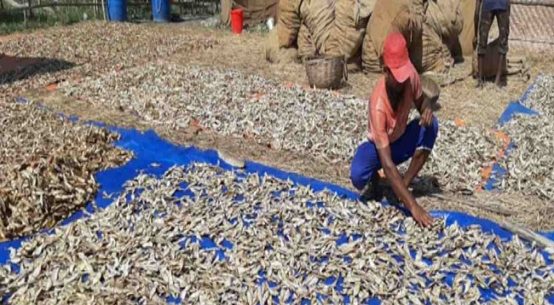In Dhaka, a severe gas crisis stemming from a supply shortfall has forced households to find innovative solutions, significantly affecting their daily lives, health, and finances.
Some opt to cook late into the night, while others brave the freezing dawn to prepare meals. A growing number are turning to electric stoves, LPG cylinders, kerosene stoves, or simply resorting to dining out at restaurants.
However, these adjustments are not without consequences.
The shift to late-night cooking routines is disrupting sleep patterns, and increased reliance on restaurant meals is leading to various health concerns.
Cooking at night, buying electric stoves: How Dhaka households are grappling with a crippling gas crisis
And, for postpaid gas users, the bills must still be paid, even without gas supply, adding an extra layer of financial strain due to the need to purchase cylinder gas, electric stoves, or kerosene stoves.
While gas shortages during winter are not uncommon in some parts of the city, this year’s situation has proven to be more prolonged, extending to previously unaffected areas.
MdHaronur Rashid Mullah, managing director of state distributor Titas Gas, attempted to downplay the problem, asserting that gas is not entirely unavailable.
Gas supplies in Bangladesh have been dwindling since early November last year, affecting residential, industrial, and commercial customers alike.
The shortfall has also led to power cuts as the gas-run electricity plants lack fuels for production.
The daily demand is about 3,800 million cubic feet, while the supply was between 2,800 million to 3,000 million cubic feet until recently. However, on Jan 25, the national grid supplied 2,600 million cubic feet of gas because of maintenance work at floating LNG terminals in the sea.
Cooking at night, buying electric stoves: How Dhaka households are grappling with a crippling gas crisis
State Minister for Power, Energy and Mineral Resources Nasrul Hamid has informed journalists that this situation will continue until March.
Petrobangla reported that the daily demand for gas in Dhaka for household, industrial, and commercial connections is around 2,430 million cubic feet, but only 1,628 million cubic feet is currently being supplied.
While gas shortages are evident in industries and power plants, Petrobangla did not disclose the extent of shortages for industrial, commercial, and residential consumers separately.
The gas crisis has intensified in several parts of Dhaka, including Mirpur, Kalshi, Pallabi, Mohakhali and Mugda.
The residents say it is difficult for them to track when gas is available.
Joyanta Rani Das, a government employee residing in Mohakhali, said she has spent Tk 20,000 on arranging cooking with an electric stove to tackle the gas crisis in a family with her two minor children and elderly parents-in-law.
Still, she faces problems as it takes longer than usual to cook with the electric stove and the food does not taste as good as those cooked in gas stoves.
“Not everyone has the ability to spend so much money. It’s difficult for them. We’ve also suffered for a long time,” she said.
Cooking at night, buying electric stoves: How Dhaka households are grappling with a crippling gas crisis
Shahana Kader, a resident of Mirpur-12, is also using an electric stove. ”We’re paying for both gas and electric stove. We don’t have other options than spending extra on cooking.”
Despite a lack of gas from 7am to 11pm daily for two months, housewife ShahinaAkter of East Rajabazar has not resorted to gas cylinders because they are afraid of leaks leading to explosions. The family have been forced to buy food from restaurants at higher prices.
NahidaParvin of Mirpur-12, has braved the risk involving cylinder gas for cooking. “What else can we do? We can’t live without eating.”
Construction worker Saiful from Kalshi, who gave a single name, said he bought a kerosene stove because cylinder gas is too expensive for him. Still, kerosene does not appear to be a cheap option.
“We use the stove only in emergencies. We can’t give our children hot food all the time, even amid winer cold. We have nothing else to do.”
Imam Hossain, a government employee living in Mugda, said they are often forced to take midday meals in the evening because the pressure of gas increases only in the afternoon.
“This is why we remain awake and cook late at night so that we can eat the next day.”
RebekaAkter has been working as a cook in several student hostels in the Sadarghat area for 11 years. “I haven’t seen such an intense gas crisis in this area. Two of the five messes I work in now do not have any gas at all.”
Non-resident female students of Jagannath University live in messes mostly in the Kaltabazar and Laxmibazar areas, and they cook separately for themselves.
One of them, MaksudaAkter, shares a flat with five others. “It took 40 minutes on an average for one of us to cook, now the cooking does not finish even in two hours. The food is not even cooked properly. I take my midday meals at the cafeteria most of the time.”
Titas MD Haronur claimed the gas crisis in Dhaka’s residential areas has significantly reduced.
“In some areas, there might be issues due to pipeline leakage or old lines, causing low gas pressure. The gas situation is a national issue, and Titas can’t do much if the national supply doesn’t increase,” he said.
He said the authorities are prioritising supply to power plants and fertiliser factories over residential areas. “We are providing gas as it is available.”
In residential, commercial, and industrial sectors, the daily demand is 1,600 to 1,700 million cubic feet while Titas is supplying 1,200 million cubic feet, according to him.
“In some areas, gas may not be available during the day but can be found at night. It’s not that there is no gas at all. Those who say they don’t get gas or won’t pay the bill should disconnect the gas line. They have the freedom to use LPG in this case.”

